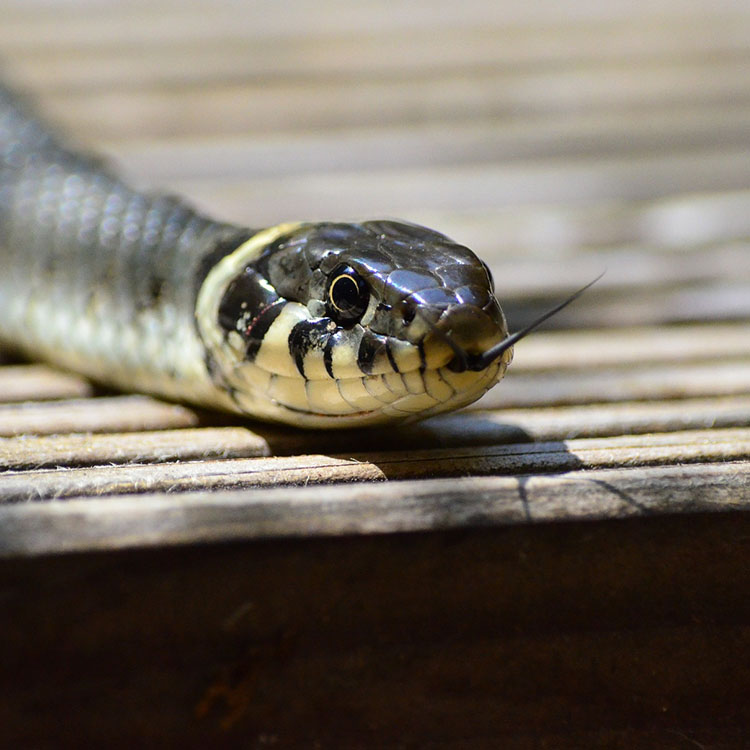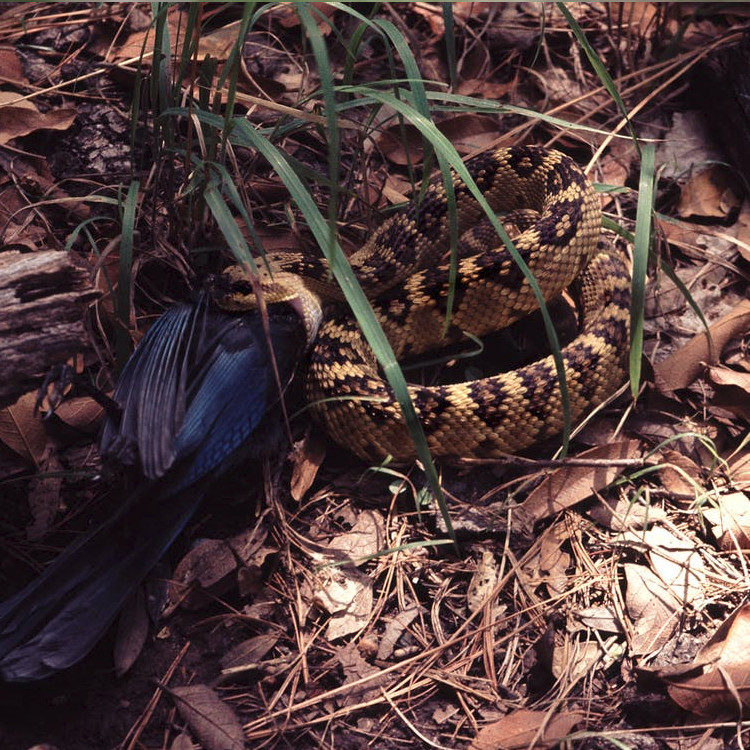How to Tell if a Snake is Poisonous
There are four types of venomous snakes that inhabit the United States. They vary in color and size and knowing what type of snake you are dealing with can prevent serious injury. Never attempt to trap, catch, kill, or otherwise interact with a venomous snake, or a snake you can't identify as non-venomous. The majority of snake deaths in the United States are caused by agression of part of humans towards these snakes. It's best to leave venomous snakes alone if they are in the yard and contact a snake removal expert if they are found inside the home.

Cottonmouth Snakes
The pupils of a cottonmouth are elliptical and run vertically across the eyeball. They can be black or varying shades between black and green, and will be striped in white on the sides of the head. They like water, but can live in damp, marshy areas with water access. Snakes that are mature will have lost the yellow tail stripe they have at birth. These snakes are not friendly towards other snakes, and will not likely travel with other species or even other cottonmouth snakes.
Rattlesnakes
So named for the rattle on their tails, rattlesnakes will be heard before seen in some cases. Their eyes resemble those of a cat, with the elliptical pupil that dilates like a cats in varying degrees of lights. They have a large triangle-shaped head and will have varying shades of brown striping running perpendicularly to their body.

Copperhead Snakes
These snakes are orange to pink in color and can have a yellow tail like the cottonmouth. These snakes are not as common in the Western United States and are normally found in the Eastern United States. They do not usually exceed a length of 1 meter but can get longer over their lifetime and depending upon diet. The broad head of a copperhead is unique and will look to be blunt compared to other snakes. Some may mistake their subtle brown hue and not recognize this as an orange or pink umbre.
Coral Snakes
There are a few other species of snakes that are so similar to the coral snake in coloration that people may mistake a venomous snake for a non-venomous snake, and vise-versa. There are cute nursery rhymes that teach boy scouts how to identify the coral snake and distinguish it from King snakes are Milk snakes. Left alone, these snakes are not a threat to humans and will quickly move on once they determine there is no food to be had at your campsite or in your yard.
